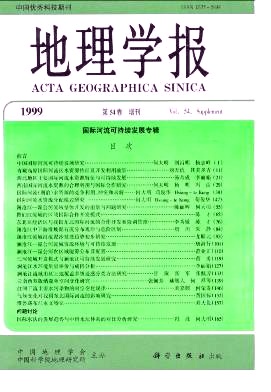He Daming, Yang Ming, Feng Yan
The major big international rivers and its transboundary water resources concentrate on southwest China,mainly in Yunnan Province. Yunnan province owns five big international rivers out of its six big rivers. Itstransboundary water resources is very plentiful. The annual average run-off flowing into the neighbor countriesis up to 2 230 x108m3 , which occupies about 60% of the annual outflow to other countries in China. Thetransboundary water resources is very important for the sustainability to the broad areas of Southwest Chinaand lower riparian countries of Cambodia, Laos, Myamar, Thailand, and Vietnam. Especially, it benefits tothe development for agriculture, hydropower generation, navigation, and bio-diversity conservation in theseareas.Because of the control and interaction from Southeast monsoon and Southwest monsoon in Yunnanprovince, the water resource changes a lot in both time and space. The annual mean water quantity yieldingin Yunnan province, for example, is 517 x ICr m in Lancang River basin (the upper Mekong), 472 x 108m3 in Red River basin, 280 x 108 m3 in Lu River basin (upper Salween River), and 263 x 108 m3 in Irrawad-dy River basin. Simultaneously, the annual mean outflow to the neighbour countries of these rivers is sepa-rately 771.9 x 108m3, 489.6 x 108m3, 701.6x108m3, and 358..3 x 1088m3. So, its objectives of develop-ment and management are quite different among each river basin.In the past period of planning economic system, the reasonable utilization and coordinated managementof transboundary water resources has seldom been studied in China. Now, it is faced on many problems: allsituated to the lower development levels and existing in a great difference between each other; no clear re-source rights at different levels from central government and local government to the villages; and no enoughcommon data for using.The whole Yunnan Pn>vince has been included in The Greater Lancang - Mekong Subregional EconomicCooperation (GMS) since 1992. The reasonable utilization of water resources in international river basin is akey factor for the international cooperative development and management of the transboundarv water re-sources. As the international rivers flow in the way from the north to the south, the social, economic, andenvironment conditions related water resources are quite different along its flowing trips. In order to obtain thecomplementary development, each river should be handled as a unit. All objectives and problems related tothe competitive utilization and conservation of water resources should be compromised and soluted in basin -wide level.
